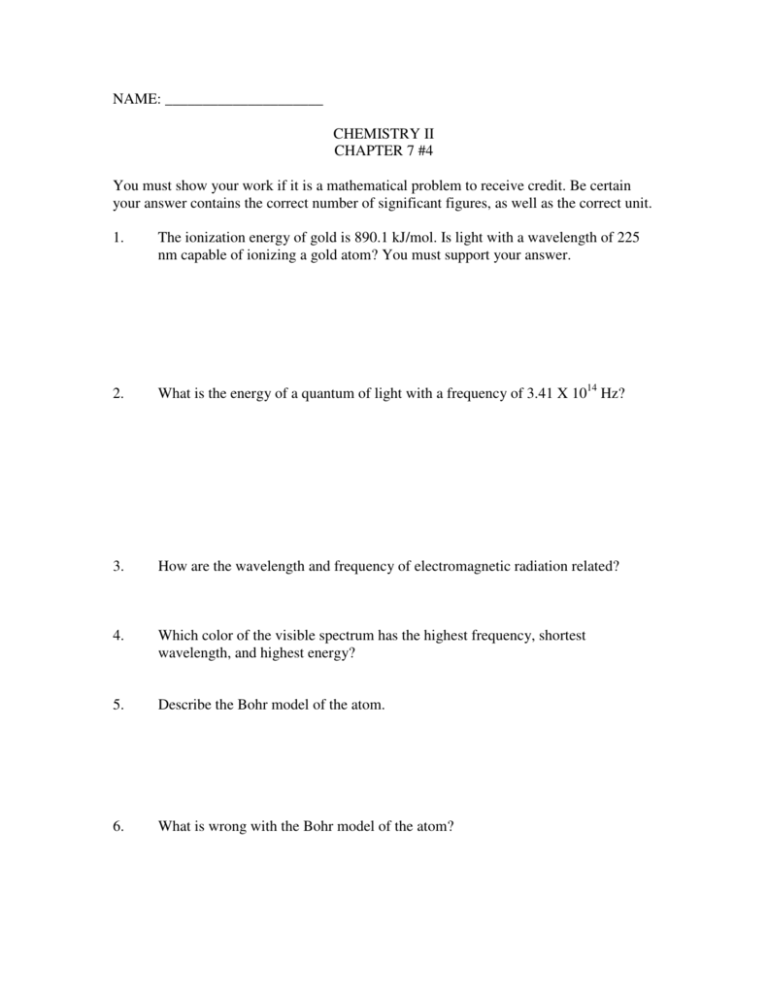NAME: CHEMISTRY II CHAPTER 7 #4 You must show your work if it
advertisement

NAME: _____________________ CHEMISTRY II CHAPTER 7 #4 You must show your work if it is a mathematical problem to receive credit. Be certain your answer contains the correct number of significant figures, as well as the correct unit. 1. The ionization energy of gold is 890.1 kJ/mol. Is light with a wavelength of 225 nm capable of ionizing a gold atom? You must support your answer. 2. What is the energy of a quantum of light with a frequency of 3.41 X 1014 Hz? 3. How are the wavelength and frequency of electromagnetic radiation related? 4. Which color of the visible spectrum has the highest frequency, shortest wavelength, and highest energy? 5. Describe the Bohr model of the atom. 6. What is wrong with the Bohr model of the atom? 7. What happens when an electron returns to its ground state from an excited state? (Questions 8-9) A laser emits light with a frequency of 4.69 X 1014 Hz. 8. What is the energy of one quantum of this energy? 9. The laser emits its energy in pulses of short duration. If the laser emits 1.3 X 10-2 J of energy during a pulse, how many quanta of energy are emitted during the pulse? 10. Calculate the wavelength (in nm) of the hydrogen emission line that corresponds to the transition of the electron from the n = 3 to n = 1 energy levels. 11. What is the characteristic wavelength (in nm) of an electron with a velocity of 5.97 X 106 m/s? The mass of an electron is 9.11 X 10-31 kg. 12. A student uses a shirtbox spectroscope that is 36.0 cm in length. The diffraction grating has 13.400 lines/inch. Calculate the wavelength (in nm) associated with each of the following lines they observed. a. spectral line (color band) at 12.5 cm b. spectral line (color band) at 8.0 cm 13. Indicate whether energy is emitted or absorbed when the following electronic transitions occur in hydrogen: a. n = 2 to n = 6 b. n = 5 to n = 1 14. Calculate the wavelength of a proton with a mass of 1.63 X 10-27 kg with a velocity 5.0% of the speed of light. 15. Arrange the following electromagnetic radiations in order of DECREASING wavelength: a. infrared radiation from a heat lamp b. ultraviolet light from the sun c. dental X-rays d. the signal from a short-wave radio station e. green light 16. Calculate the energy associated with a photon whose wavelength is 4.0 X 10-8 cm. 17. How much energy is associated with a photon in the ultraviolet region of the spectrum with a frequency of 6.6 X 1015 s-1? 18. Calculate the frequency of a photon of orange light whose wavelength is 6.2 X 105 cm.








